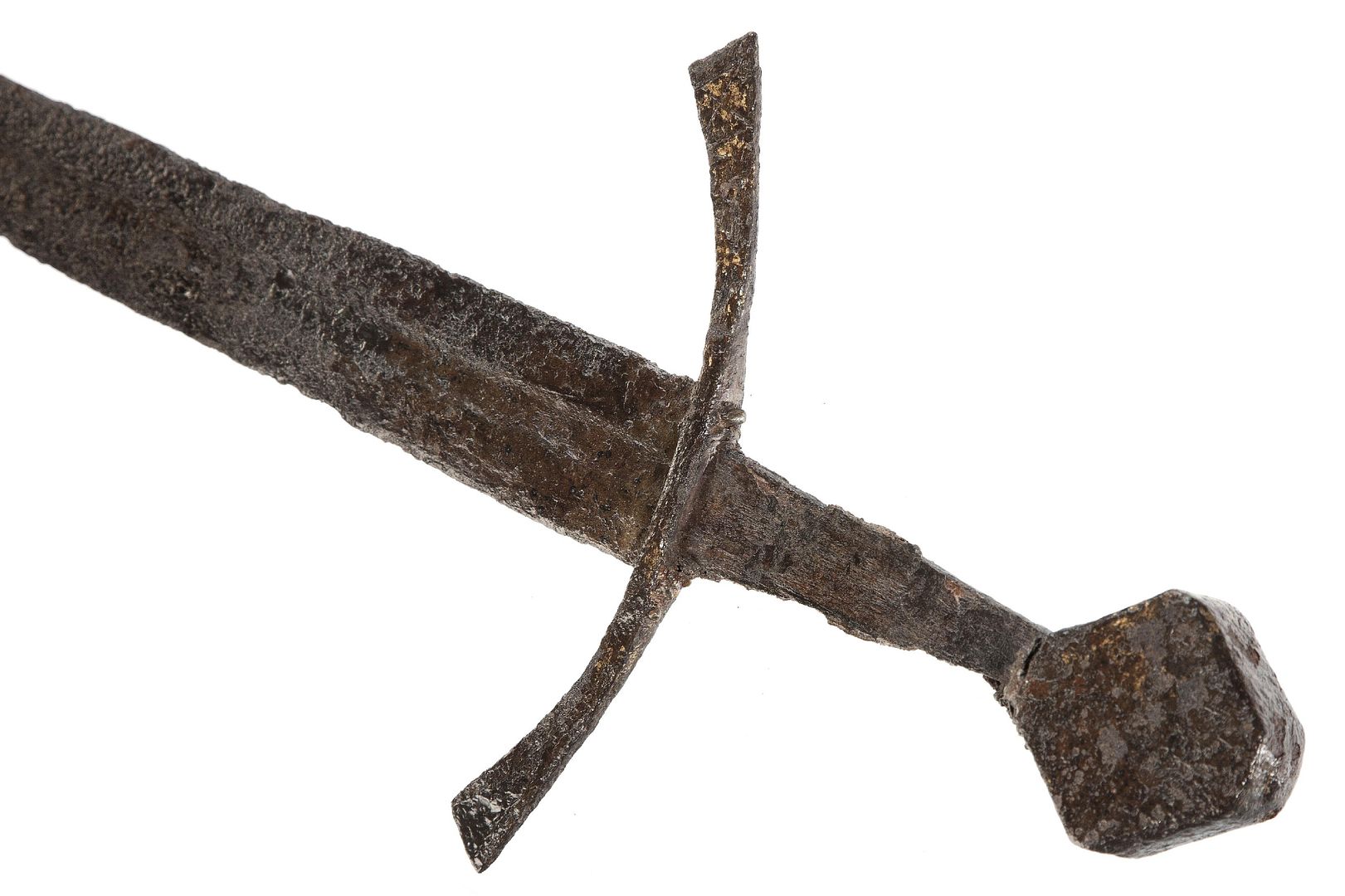Oakeshott Type XII Medieval Sword w/F pommel / Style 6 Guard
Jul 7, 2013 8:11:34 GMT
Post by Jack Loomes on Jul 7, 2013 8:11:34 GMT



Length: 105.5 cm / 41.5 inches.
A large rhomboidal pommel with flat faces and traces of gilding sits above a broad tang of single hand length, the latter bearing preserved fragments of a wooden grip. The long, curved crossguard widens and flattens towards its tips and, like the pommel, retains traces of gilding as well as some incised decoration.
The long blade is double-edged and bears a fuller on each face that runs for approximately two thirds of its total length. It tapers evenly towards a rounded, spatulate tip. Some remains of a silver inlaid inscription may be seen on both sides within the fullers. The sword is in excavated condition, having been found in a river or lake.
The sword may be classified as belonging to Oakeshott's Type XII overall, with a pommel of Type F and a crossguard of Style 6.
There are many indications that this sword was recovered from a river or lake, such as the preserved traces of the wooden grip upon the tang as well as the concretion of tiny pebbles and silt at the tip of the blade and elsewhere. Upon closer examination it is quite apparent that its hilt was originally adorned with a richly gilded decoration that would have been quite eye-catching overall. To enhance this appearance, a beautiful inscription of inlaid silver letters and characters may be seen upon the blade, and although this has mostly deteriorated certain letters (such as ‘N', ‘O' and perhaps an ‘I' or a cross) may still be discerned. These characters mean little nowadays but were common combinations on sword inscriptions from the twelfth to the fourteenth centuries.
The distinctive pommel of this sword is a rare type and takes the form of an eight-sided rhomboid with flat faces. This style is thought to have evolved from the earlier ‘brazil nut’ types of the eleventh and twelfth centuries, with early examples (c.1200-1250) retaining elements of those types. By the end of the thirteenth century these pommels had flatter faces and edges than their forebears, as shown upon our sword, and may be categorised as Oakeshott Type F. Examples of these angular pommels may be seen on an effigy of Sir John de Ifield (d.1317) at Ifield in Sussex, and on that of John of Eltham (d.1334) in Westminster Abbey. Both of these examples are actually diamond shaped, rather than eight-sided, and may be a further evolution of the type.
Extract from Records of the Medieval Sword by Ewart Oakeshott regarding Type XII: sword-site.com/thread/127/oakeshott-type-records-medieval-sword
Sources: www.yorkshiremuseum.org.uk/Page/ViewCollection.aspx?CollectionId=21
& www.bbc.co.uk/northyorkshire/content/articles/2007/12/19/viking_sword_feature.shtml
Source: www.peterfiner.com/current-stock/item/1840/

.png?width=1920&height=1080&fit=bounds)